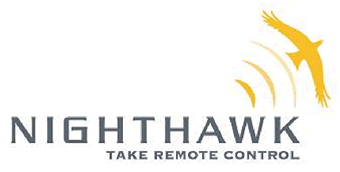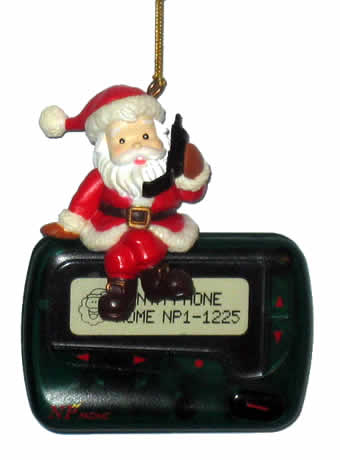BloostonLaw Telecom Update Published by the Law Offices of Blooston, Mordkofsky, Dickens, Duffy & Prendergast, LLP [Selected portions reproduced here with the firm's permission.] www.bloostonlaw.com | Vol. 10, No. 50 | December 19, 2007 |
SEASON’S GREETINGS  In lieu of holiday cards this season, BloostonLaw will be making a donation to Healthcare for the Homeless, a local charity program. We wish our clients a happy and safe holiday season! In observance of the holidays, BloostonLaw Telecom Update will not be published until Jan. 9, 2008. Our office will be closed from Dec. 21 through Dec. 25, and Dec 31 & Jan. 1. In lieu of holiday cards this season, BloostonLaw will be making a donation to Healthcare for the Homeless, a local charity program. We wish our clients a happy and safe holiday season! In observance of the holidays, BloostonLaw Telecom Update will not be published until Jan. 9, 2008. Our office will be closed from Dec. 21 through Dec. 25, and Dec 31 & Jan. 1.
New CPNI Rules Require Filing Annual Certification With FCC By March 1 With the FCC’s new customer proprietary network information (CPNI) rules now in effect as of December 8, clients should modify and complete the “Annual Certification of CPNI Compliance” shortly after the beginning of the new calendar year (2008) for the prior calendar year (2007). Although the rules do not specify when you should execute the certification, we recommend you do it as soon as possible after the end of the year. When completed shortly after the beginning of each calendar year, a company officer with personal knowledge that the company has established operating procedures adequate to ensure compliance with the rules should execute the Certification, place a copy of the Certification and accompanying Exhibits in the Company’s CPNI Compliance Records, and forward the original to BloostonLaw no later than Feb. 15 for filing with the FCC. THE CERTIFICATION AND EXHIBITS MUST BE UPDATED AND RE-EXECUTED EACH YEAR BY AN OFFICER OF THE COMPANY, AND FILED WITH THE FCC ON OR BEFORE MARCH 1. CLIENTS THAT HAVE NOT YET PREPARED AND SIGNED A 2006 CERTIFICATION SHOULD DO SO BY YEAR-END 2007. Clients interested in obtaining BloostonLaw's CPNI compliance manual should contact Gerry Duffy (202-828-5528) or Mary Sisak (202-828-5554). AUCTION 73 CHANGES: The FCC has announced that the upfront payment deadline for the auction of 700 MHz Band licenses (Auction 73) has been rescheduled to January 4, 2008, 6:00 p.m. Eastern Time (ET). In addition to the revised upfront payment deadline, the mock auction is rescheduled to January 22, 2008. The Auction 73 start date of January 24, 2008, remains unchanged. FCC Eases Media Ownership Rule, Allowing Newspaper, Broadcaster Mergers In Top 20 Markets, With Conditions Despite opposition from the Senate Commerce Committee and the two Democratic FCC Commissioners, Chairman Kevin Martin secured the votes of his two Republican colleagues and passed an order amending the 32-year-old absolute ban on newspaper/broadcast cross-ownership that presumptively allows a newspaper to own one television station or one radio station in the 20 largest markets, subject to certain criteria and limitations. The newspaper/broadcast cross-ownership rule currently prohibits common ownership of a broadcast station and a daily newspaper in the same market. The ban was established during the Nixon Administration, when Republicans and the press were extremely hostile toward one another. It is ironic that a Republican FCC majority is now voting to undo that cross-ownership ban. At yesterday’s open meeting, the FCC noted that the 3rd U.S. Circuit Court of Appeals in Philadelphia had affirmed the Commission’s determination that this blanket ban on newspaper/broadcast cross-ownership was no longer in the public interest while remanding the specific cross-media ownership limits drawn by the Commission in 2003 (Prometheus Radio Project, et al. v. FCC). The Court agreed that “… reasoned analysis supports the Commission’s determination that the blanket ban on newspaper/broadcast cross-ownership was no longer in the public interest.” The FCC majority said that the media marketplace has changed considerably since 1975 when the newspaper/ broadcast cross ownership was put in place. At that time, cable was a nascent service, satellite television did not exist and there was no Internet. Consumers have benefited from the emergence of new sources of news and information. But according to almost every measure newspapers are struggling. For example, at least 300 daily papers have stopped publishing over the past 30 years and circulation and advertising revenues at approximately half of all U.S. dailies has dropped precipitously in recent years. Permitting cross-ownership can preserve the viability of newspapers by allowing them to share their operational costs across multiple media platforms. The FCC majority said the rule would presumptively permit cross ownership only in the largest markets where there exists competition and numerous voices. The revised rule balances the need to support the availability and sustainability of local news while not significantly increasing local concentration or harming diversity. Under the new approach, the Commission presumes a proposed newspaper/broadcast transaction is in the public interest if it meets the following test: (1) the market at issue is one of the 20 largest Nielsen Designated Market Areas (“DMAs”);
(2) the transaction involves the combination of only one major daily newspaper and only one television or radio station;
(3) if the transaction involves a television station, at least eight independently owned and operating major media voices (defined to include major newspapers and full-power TV stations) would remain in the DMA following the transaction; and
(4) if the transaction involves a television station, that station is not among the top four ranked stations in the DMA.
All other proposed newspaper/broadcast transactions would continue to be presumed not in the public interest. However, the Report and Order addresses two limited circumstances in which this negative presumption would be reversed: First, it adapts the Commission’s longstanding approach concerning failed or failing station waivers to newspaper/broadcast combinations, using the same criteria in defining whether an outlet is “failing” or has “failed.” To be deemed “failed,” the newspaper or broadcast station would have to have ceased publication or gone dark at least four months before the filing of an application, or be in bankruptcy proceedings. To be treated as “failing,” the applicant must show that (a) the broadcast station has had an all-day audience share of 4 percent or lower, (b) the newspaper or broadcast station has had a negative cash flow for the previous three years, (c) the combination will produce public interest benefits, and (d) the in-market buyer is the only reasonably available candidate willing and able to acquire and operate the newspaper or station. Second, the negative presumption against a newspaper/broadcast combination will be reversed when a proposed transaction results in a new source of local news in a market – to be specific, when a combination would initiate at least seven hours of new local news programming per week on a broadcast station that previously has not aired local news. Under the new rule, the Commission would consider these presumptions as establishing a high hurdle as it reviews the transactions on a case-by-case basis. In particular, applicants attempting to overcome a negative presumption about a newspaper television combination will need to demonstrate by clear and convincing evidence that post-merger, the merged entity will increase the diversity of independent news outlets (e.g., separate editorial and news coverage decisions) and increase competition among independent news sources in the relevant market. The Commission will use the following factors to inform its evaluation: - the level of concentration in the DMA;
- a showing that the combined entity will significantly increase the amount of local news in the market;
- a showing that the newspaper and the broadcast outlets each will continue to employ its own news and editorial staff and that each will exercise its own independent news judgment; and
- the financial condition of the newspaper or broadcast station in the proposed combination, and if the newspaper or station is in financial distress, the proposed owner's commitment to invest significantly in newsroom operations.
This approach will permit the Commission to balance the needs of the public for media and viewpoint diversity with its concerns about the financial health of traditional media outlets in the context of each particular transaction. This rule change is notably more conservative in approach than the remanded newspaper/broadcast cross-ownership rule that the Commission adopted in 2003. That rule would have allowed transactions in the top 170 markets. The rule adopted today allows only a subset of transactions in only the top 20 markets, which would still be subject to an individualized determination that the transaction is in the public interest. With respect to the remaining broadcast ownership rules currently under review, the Commission determined that any further relaxation of ownership rules in the radio or television broadcast markets should not be allowed. The Commission will make no changes to the local television “duopoly” rule, the local radio ownership rule, local radio-television cross ownership rule and the dual network rule currently in effect. Commissioner Michael Copps strongly disagreed with the majority. “Today’s decision would make George Orwell proud,” he said. “We claim to be giving the news industry a shot in the arm—but the real effect is to reduce total newsgathering. We shed crocodile tears for the financial plight of newspapers—yet the truth is that newspaper profits are about double the S&P 500 average. We pat ourselves on the back for holding six field hearings across the United States—yet today’s decision turns a deaf ear to the thousands of Americans who waited in long lines for an open mike to testify before us. We say we have closed loopholes—yet we have introduced new ones. We say we are guided by public comment— yet the majority’s decision is overwhelmingly opposed by the public as demonstrated in our record and in public opinion surveys. We claim the mantle of scientific research—even as the experts say we’ve asked the wrong questions, used the wrong data, and reached the wrong conclusions. “Our motivations are less Olympian and our methodology far simpler—we generously ask big media to sit on Santa’s knee, tell us what it wants for Christmas, and then push through whatever of these wishes are politically and practically feasible. No test to see if anyone’s been naughty or nice. Just another big, shiny present for the favored few who already hold an FCC license—and a lump of coal for the rest of us. Happy holidays!” Also disagreeing with the majority was Commissioner Jonathan Adelstein, who said: “By moving forward now with relaxation of the newspaper-broadcast cross-ownership rule, the majority ignores the repeated pleas of the American people and their representatives in Congress. There is no time-sensitive issue that compels us to act today. In fact, we were asked by leaders in Congress, including our oversight committees, to defer today and conduct a more inclusive process. That we are moving forward when the voices that matter are asking us to refrain defies the imagination. “The FCC has never attempted such a brazen act of defiance against Congress. Like the Titanic, we are steaming at full speed despite repeated warnings of danger ahead. We should have slowed down rather than put everything at risk. “The reasons for Congressional concern were underscored by the frantic scramble to make major policy changes at the last minute to this item. Late last night, there was a brand new proposal to provide waivers to 42 newspaper-television combinations. And not until early this morning, we learned of massive changes to the waiver standards – an issue of grave concern to me and a number of leaders in Congress. The majority argues this item is the product of long and careful deliberation. But after an odyssey through the Commission and the Courts, massive changes and new, previously unseen waivers were adopted in the dead of night on the eve of a vote. That hardly inspires confidence that this was an open, transparent and deliberative process. “The choices made by the majority are stark. The only entities asking for relief are the very media giants we are charged with overseeing. As we were reminded on Capitol Hill, the law does not say we are to serve those who seek to profit by using the public airwaves. The law says we are to serve the public interest. And the public has repeatedly told us they are not interested in further media consolidation.” Clearly this is a contentious issue that is far from being resolved at the Commission or in Congress or, perhaps, in the Courts. BloostonLaw contacts: Hal Mordkofsky, Ben Dickens, Gerry Duffy, and John Prendergast. FCC Opens Proceeding To Establish Commercial Mobile Alert System The FCC has adopted a Notice of Proposed Rulemaking (NPRM) to establish a Commercial Mobile Alert System (CMAS), under which commercial mobile service (CMS) providers may elect to transmit emergency alerts to the public. This proceeding represents a next step in complying with the Warning Alert and Response Network (WARN) Act requirement that the Commission enable commercial mobile service alerting capability for providers that elect to transmit emergency alerts. In addition, with this rulemaking the FCC continues to address its obligations under the President’s “Public Alert and Warning System” Executive Order that the Commission “adopt rules to ensure that communications systems have the capacity to transmit alerts and warnings to the public as part of the public alert and warning system.” Section 602 of the WARN Act requires the Commission to adopt: (1) system critical protocols and technical requirements for the CMAS; (2) a mechanism under which commercial mobile service provider licensees may elect to participate in the CMAS and disclose to their subscribers whether or not they will participate; (3) rules under which licensees and permittees of noncommercial educational (NCE) broadcast stations or public broadcast stations install necessary equipment and technologies on, or as part of, any broadcast television digital signal transmitter to enable the distribution of geographically targeted alerts by CMS providers that have elected to participate in the CMAS; and (4) technical testing requirements for CMS providers that elect to transmit emergency alerts and for the devices and equipment used by such providers for transmitting such alerts. In this NPRM, the FCC seeks comment on questions pertaining to all of these statutory requirements. It also seeks comment about how the issues discussed in the NPRM relate to the Commission’s activities in connection with the Emergency Alert System (EAS). This NPRM is the latest example of the FCC’s commitment to enhance the redundancy, reliability and security of emergency alerts to the public by requiring that alerts be distributed over diverse communications platforms. Most recently, the FCC expanded the EAS from its legacy in analog television and radio to include participation by digital television broadcasters, digital cable television providers, digital broadcast radio, Digital Audio Radio Service (DARS) and Direct Broadcast Satellite (DBS) systems. As the Commission noted in its 2005 EAS Further Notice of Proposed Rulemaking, wireless services are becoming equal to television and radio as an avenue to reach the American public quickly and efficiently. As of June 2007, approximately 243 million Americans subscribed to wireless services. Wireless service has progressed beyond voice communications and now provides subscribers with access to a wide range of information critical to their personal and business affairs. In times of emergency, Americans rely on their mobile telephony service to receive and retrieve critical, time-sensitive information. A comprehensive mobile alerting system would have the ability to reach people on the go in a short timeframe, even where they do not have access to broadcast radio or television or other sources of EAS. Providing critical alert information in this respect will ultimately help avert danger and save lives. Section 602(a) of the WARN Act requires that the Commission adopt technical standards, protocols, procedures, and other technical requirements based on the recommendations of the Commercial Mobile Service Alert Advisory Committee (CMSAAC) that will enable commercial mobile service alerting capability for CMS providers that voluntarily elect to transmit emergency alerts. The CMSAAC has recently completed its report, and the FCC seeks comment generally on all the recommendations contained therein. Accordingly, the FCC seeks comment on the technical standards, protocols, procedures and other requirements that should be adopted to facilitate the transmission of emergency alerts by CMS providers. The FCC asks whether these recommendations, if adopted, would satisfy the requirements of the WARN Act and the goal of ensuring a robust, reliable and effective CMAS that could, in conjunction with other alerting systems and technologies, be used to transmit emergency alerts to all Americans, including those with special needs and those who do not speak English. The FCC seeks comment on whether the CMSAAC recommendations present an effective mechanism for alert originators at all levels of government to initiate emergency alerts and whether these recommendations could be implemented using a myriad of current and future technologies. Commenters should review all of the recommendations and comment, where appropriate, on the manner in which each of the recommendations contributes to an effective, unified system for the delivery of alerts over commercial mobile systems as envisioned by the WARN Act. The FCC further seeks comment on any alternatives to the CMSAAC’s recommendations. Comments that suggest alternatives to the CMSAAC’s recommendations should address with sufficient detail how their proposed alternative would promote an effective CMAS as envisioned by the WARN Act. The FCC seeks comment on the availability of technologies now and in the future for the transmission of alerts over the CMAS. For example, to what extent do point-to-point and point-to-multipoint technologies provide viable solutions for a national CMAS? In this regard, the FCC notes that, the CMSAAC raised concerns regarding the viability of point-to-point solutions for a national alerting system. The FCC seeks comment on these concerns. Specifically, can current generation point-to-point services such as short message service (SMS) be used to efficiently alert large populations of people within a short time frame? What impact would wireless 3G networks have on the SMS model? Can point-to-multipoint technologies such as cell broadcast provide a viable transport solution for alerts transmitted over the CMAS? If current cell broadcasting does not provide a viable solution, what further development would be necessary to use cell broadcasting for the CMAS? Are there significant differences in how CDMA or GSM systems could employ cell broadcasting today and in the future? Are current mobile devices capable of receiving cell broadcast alerts? The FCC also seeks comment, particularly from the EAS community, on whether a broadcast distribution model similar to that used to distribute EAS is consistent with the WARN Act and the CMAS. Could radio data systems like the Radio Broadcast Data System (RBDS), which do not require significant service provider infrastructure, nonetheless meet our goals for efficient delivery of alerts over the CMAS? What about emerging wireless broadcast technologies such as MediaFLO and DVB-H? Comments should include a discussion concerning the broad range of devices intended to utilize the CMAS and potential impact on the subscriber service experience. The CMAS as proposed by the CMSAAC likely will require a higher layer protocol that carries meta-data (administrative information) with the alert message, and can send authentication and authorization data to the alert’s originator. The FCC seeks comment on whether this higher layer protocol is necessary for the CMAS. The FCC also seeks comment on how point-to-point, point-to-multipoint and broadcast models could carry this information and provide the recommended authentication information. The FCC further seeks comment on any alternative methods for transmitting this data. What should be the Federal Government’s role, if any, in managing the CMAS? The CMSAAC recommended that a Federal Government entity fulfill the roles of “Alert Aggregator” (i.e., receive, accumulate and authenticate alerts originated by authorized alert initiators using the Common Alert Protocol (CAP)) and the “Alert Gateway” (i.e., formulate an alert based on key fields in the CAP alert sent by the alert initiator and transmit the alert to corresponding gateways operated by each CMS provider). The FCC seeks comment on these recommendations. Is it necessary and desirable for a Federal government entity to assume these roles? If so, what Federal government entity would be appropriate? The CMSAAC also recommended that all alerts, whether national or local, would be funneled through this aggregator. Is a centralized system best positioned to accomplish the goals of the CMAS as envisioned by the WARN Act? Would this run the risk of creating a single point of failure? Further, the FCC seeks comment on the government alerting system capability to a) support the aggregation of alerts from emergency agencies down to county and municipal levels, b) distribute alerts to a diverse range of potential alerting systems, and c) interact and determine the status of such connected alerting systems. What is the role of state emergency agencies in such a scheme? Should the aggregator concept be expanded to include state and county emergency agencies, such as state and county emergency operations centers (EOCs)? The FCC seeks comment on the CMSAAC’s recommendation that the CMAS use CAP as the basic alerting protocol from the alert initiator to the alert gateway. The FCC also seeks comment about the use of CAP as a general, system-wide CMAS interface. Is use of CAP currently practicable in the context of CMAS? The FCC seeks comment on whether it should adopt a character limit for alerts transmitted over the CMAS. The FCC also seeks comment on whether and to what extent emergency alerts should be classified. The FCC specifically seeks comment on the CMSAAC’s recommendation that there be three classes of Commercial Mobile Alerts: Presidential-level, Imminent threat to life and property; and Child Abduction Emergency or “Amber Alert” Service. For example, the CMSAAC recommended that the term “Imminent threat to life and property” be defined as “alerts where the CAP severity equals Extreme or Severe, CAP urgency is Immediate or Expected, and CAP certainty is Observed or Likely.” Is this proposed definition sufficient to set a proper threshold for the class of alerts that should be transmitted using the CMAS? The FCC also seeks comment on the content of CMAS alerts, including the CMSAAC’s recommendation that all service providers support, at minimum, a capability for a text based common alerting message format support across multiple service platform technologies. The CMSAAC also recommended that the elements of a Commercial Mobile Alert Message (CMAM) should be (1) event type or category, (2) area affected, (3) recommended action, (4) expiration time with time zone, and (4) sending agency. The FCC seeks comment on these choices. The CMSAAC also recommended a method for the automatic generation of alert text by extracting information from CAP fields, SAME codes and free-form text, but proposed that the CMAS allow the generation of free text in Amber Alerts and Presidential alerts. The FCC sought comment on these and a host of other technical issues. Comments in this PS Docket No. 07-287 proceeding will be due 30 days after publication of the item in the Federal Register, and replies will be due 15 days thereafter. BloostonLaw contacts: Hal Mordkofsky and John Prendergast. FCC PROPOSES 10.2% USF CONTRIBUTION FACTOR FOR FIRST QUARTER 2008: The FCC has proposed setting the Universal Service Fund (USF) contribution factor at 0.102 or 10.2% for the first quarter of 2008. This is down from the 11.0% figure from the fourth quarter of 2007, the 11.3% figure for the third quarter, and the 11.7% for the second quarter. But it is up from 9.7% in the first quarter of last year. For the year 2006, the USF contribution factor was 9.1% in the fourth quarter, 10.5% figure for the third quarter, 10.9% in the second quarter, and 10.2% in the first quarter. The proposed 10.2% contribution factor for the first quarter of 2008 will be used to calculate the line item charge on the customer’s bill (i.e., to calculate the charges on revenues that a carrier receives). The FCC’s USF Interim Contribution Methodology order prohibits carriers from marking up the USF line item higher than the contribution factor. If the FCC takes no action by December 28, the contribution factor will become effective. BloostonLaw contacts: Ben Dickens and Gerry Duffy. FCC ADOPTS REPORT AND NPRM ON BROADCAST LOCALISM: At its December 18 open meeting, the FCC adopted a Report on Broadcast Localism and Notice of Proposed Rulemaking (NPRM) that sets forth proposals to increase local programming content and diversity in communities across America. In its review of these issues, the Commission accrued over 83,000 written comments and heard the testimony of 500 panelists offered during the six field hearings on localism conducted throughout the country. The Report makes tentative conclusions regarding the following proposals, for which it seeks comment: - Qualified LPTV stations should be granted Class A status, which requires them to provide 3 hours per week of locally-produced programming;
- Licensees should establish permanent advisory boards (including representatives of underserved community segments) in each station community of license with which to consult periodically on community needs and issues; and
- Commission adoption of renewal application processing guidelines that will ensure that all broadcasters provide some locally-oriented programming
The Report also states that the Commission will: (1) Better educate members of the public as to the obligations of broadcasters and the Commission’s procedures so that viewers and listeners can become more actively involved in ensuring that stations offer locally oriented programming; and (2) Investigate other ways to assist prospective radio licensees to identify suitable available commercial FM spectrum in the communities in which they wish to broadcast, including authorizing the development of software to do so. The Report notes that, as temporary trustees of the public’s airwaves, broadcasters are obligated to operate their stations to serve the public interest, including their airing of programming responsive to the needs and issues of their station communities of license. The actions and proposals contained in the Report are intended to ensure that the nations’ broadcasters will meet this responsibility. BloostonLaw contact: Gerry Duffy. FCC ADOPTS RULES TO EXPAND BROADCAST OPPORTUNITIES FOR NEW ENTRANTS AND SMALL BUSINESSES: The FCC, at yesterday’s open meeting, adopted a Report and Order and Notice of Proposed Rulemaking (NPRM) to expand opportunities for participation in the broadcasting industry by new entrants and small businesses, including minority- and women-owned businesses, to own broadcast outlets. The new rules are intended to help eligible entities with access to financing and availability of spectrum. Specifically, in the Order the Commission took the following actions: - Changed its construction permit deadlines to allow “eligible entities” that acquire expiring construction permits additional time to build out the facility;
- Revised the Commission’s equity/debt plus (EDP) attribution standard to facilitate investment in eligible entities;
- Modified the Commission’s distress sale policy to allow a licensee – whose license has been designated for a revocation hearing or whose renewal application has been designated for a hearing on basic qualifications issues – to sell its station to an “eligible entity” prior to the commencement of the hearing;
- Adopted an Equal Transactional Opportunity Rule that bars race or gender in broadcast transactions;
- Adopted a “zero-tolerance” policy for ownership fraud and “fast-track” ownership-fraud claims and seek to resolve them within 90 days;
- Required broadcasters renewing their licenses to certify that their advertising sales contracts do not discriminate on the basis of race or gender;
- Encouraged local and regional banks to participate in SBA-guaranteed loan programs in order to facilitate broadcast and telecommunications-related transactions;
- Gave priority to any entity financing or incubating an eligible entity in certain duopoly situations;
- Considered requests to extend divestiture deadlines in mergers in which applicants have actively solicited bids for divested properties from eligible entities;
- Convened an “Access-to-Capital” conference that will focus on the investment banking and private equity communities and opportunities to acquire financing, and;
- Announced the creation of a guidebook on diversity that focuses on what companies can do to promote diversity in ownership and contracting.
- Revised the exception to the prohibition on the assignment or transfer of grandfathered radio station combinations.
For purposes of the initiatives adopt ed in the order, an eligible entity is any entity that would qualify as a small business consistent with Small Business Administration standards for its industry grouping, based on revenue. In the NPRM adopted as part of this item, the Commission seeks comment on whether it can or should expand its definition of “eligible entity” to include other businesses. The Commission also seeks comment on how best to improve its collection of data regarding the gender, race, and ethnicity of broadcast licensees. Finally, the Commission seeks comment on a number of additional proposals designed to expand ownership opportunities for new entrants and small businesses. BloostonLaw contact: Gerry Duffy. FCC ADOPTS RULES TO PROMOTE VIDEO PROGRAMMING DIVERSITY: The FCC, at its December 18 open meeting, adopted rules to promote video programming diversity by ensuring new video programmers can enter and compete in the video market. The Order sets the number of subscribers a cable operator may serve at 30 percent nationwide. In a Further Notice of Proposed Rulemaking (FNPRM) also adopted, the Commission seeks comment on vertical ownership limits and cable and broadcast attribution rules. The 1992 Cable Act was enacted to promote increased competition in the cable television and related markets and to foster a diverse, robust, and competitive market in the acquisition and delivery of multichannel video programming. To further these goals, Congress directed the Commission to conduct proceedings to establish reasonable limits on the number of subscribers a cable operator may serve – a “horizontal limit” – and the number of channels a cable operator may devote to its affiliated programming networks – a “vertical” or “channel occupancy” limit. The 30 percent limit, set first in 1993 and modified in 1999, was challenged by Time Warner in 2001. The U.S. Court of Appeals for the District of Columbia Circuit then remanded it back to the FCC seeking further justification. That remand has been pending six years at the Commission. The FCC said that the 30 percent cable horizontal ownership limit will ensure that no single cable operator can create a barrier to a video programming network’s entry into the market or cause a video programming network to exit the market simply by declining to carry the network. In devising a limit to achieve this goal, the Commission first determined the minimum number of subscribers a network needs in order to survive in the marketplace, and then estimated the percentage of subscribers a network is likely to serve once it secures a carriage contract. In the FNPRM, the Commission seeks further comment on key issues relating to the appropriate vertical ownership limit – and how to address related attribution including issues: 1) The appropriate methodology for determining the limit; 2) How to define the relevant programming and distribution markets; 3) The extent to which vertically integrated cable operators have an incentive to engage in anticompetitive behavior that could lead to foreclosure of entry by unaffiliated programmers; and 4) The validity of certain academic studies and whether they establish that vertical foreclosure is occurring despite recent changes in the marketplace. BloostonLaw contact: Gerry Duffy. HOUSE PASSES TWO “DO NOT CALL” REGISTRY BILLS: The House has passed two bills related to the national “Do Not Call” Registry and referred them to the Senate Commerce Committee. The Do-Not-Call Registry Fee Extension Act (HR 2601), introduced by Rep. Cliff Stearns (R-Fla.), would extend the authority of the Federal Trade Commission (FTC) to collect fees to administer and enforce the provisions relating to the Do Not Call registry of the Telemarketing Sales Rule. The Do-Not-Call Improvement Act (HR 3541), introduced by Rep. Mike Doyle (D-Pa.), would amend the Do-Not-Call Implementation Act to eliminate the automatic removal of telephone numbers registered on the federal Do Not Call registry. This bill is similar to the FCC’s tentative conclusion in its Do Not Call Notice of Proposed Rulemaking (NPRM), in which it proposes to eliminate the need to reregister do-not-call telephone numbers (BloostonLaw Telecom Update, December 12). BloostonLaw contacts: Hal Mordkofsky, Ben Dickens, Gerry Duffy, and John Prendergast. STEVENS ASKS FCC CHAIRMAN TO LOOK INTO CALLING CARD PRACTICES: During last week’s Senate Commerce Committee oversight hearing on the FCC, Vice Chairman Ted Stevens (R-Alaska) called for increased deployment of broadband service to rural America and urged FCC Chairman Kevin Martin to look into calling card practices that discriminate against Alaska. In his opening statement, Stevens said: “Deployment of broadband is an important priority. The Commission has indicated that steps to provide a more accurate picture of the marketplace will be taken, and it is my hope that these actions will be taken soon. Universal service is the most important element for the communications infrastructure our country needs in rural areas. I was glad to see that the joint board has outlined proposals for comprehensive reform. While Alaska is unique, it is not alone in needing universal service programs to deliver the benefits of broadband, telemedicine and distance learning. Universal service has a central role to play in the continued development of this country’s resources in rural America and any reform efforts should reflect this important role.” During the question-and-answer portion of the hearing Senator Stevens asked the FCC to look into calling card practices. At least one major carrier is looking to discontinue service or charge a different rate for its calling cards in Alaska. “We understand that we have a threat about discontinuing some of the national calling cards in our state,” Stevens said. “Now, I thought we worked it out so that we have a concept that the same rates would apply everywhere. Are you going to permit calling cards to be available only in 49 states?” Martin said: “No, and I think you’re absolutely right. Rate integration requirements in the law say that they have to be providing that to all 50 states.” Stevens said: “That’s what really started the whole thing back when Senator [Daniel] Inouye [D-Hawaii] and I co-sponsored that resolution about universal service, making certain we had ubiquitous service all over the country available to everyone, no matter where they were in terms of communication. Now, calling cards are a part of that. I hope you will stick to that and tell the companies if they issue those calling cards, they must issue them in all 50 states. And I would hope you would take action against anyone who doesn't.” Martin said, “Yes sir. We'll follow up with that because they are required to do that everywhere.” BloostonLaw contacts: Ben Dickens, Gerry Duffy, and Mary Sisak. SPRINT NEXTEL SEEKS LIMITED WAIVER OF NEW CPNI RULES: The FCC has asked for comment on a petition filed by Sprint Nextel seeking a limited waiver of certain new Customer Proprietary Network Information (CPNI) obligations in sections 64.2010(b), (c), (e) and (f) of the Commission’s rules. The rules were adopted by the Commission in the EPIC CPNI Report and Order released on April 2, and became effective on December 8 (see separate story on Page 1). Specifically, Sprint Nextel requests a waiver until June 30, 2008, to complete the conversion of its wireless customers to its CPNI-compliant Unified Billing Platform (UBP) without disrupting the customer experience and “to deploy CPNI compliance solutions for first time online account authentication and online account change notification to better serve wireline customers.” Sprint Nextel says its UBP automates CPNI compliance through password verification, auto-generated customer notifications, and technical security measures. Comments in this WC Docket No. 04-36 proceeding are due January 7, and replies are due January 14. BloostonLaw contacts: Gerry Duffy and Mary Sisak. DECEMBER 30: FCC FORM 507, ICLS QUARTERLY LINE COUNT UPDATE: All wireline and wireless eligible telecommunications carriers (ETCs), with competitors (CETCs) operating in their study areas, must file quarterly line count updates with the Universal Service Administrative Company (USAC) to receive Interstate Common Line Support (ICLS). The December 30 report includes lines served as of June 30, 2007. This data is used to calculate an ETC’s per-line universal service support. CETCs are also required to file quarterly line count updates. However, an ETC without competition is not required to file Form 507, but may do so on a voluntary basis. BloostonLaw contacts: Ben Dickens, Gerry Duffy, and Mary Sisak. JANUARY 1: CARRIERS MUST NOTIFY CUSTOMERS OF “DO NOT CALL” OPTIONS: The FCC requires each common carrier (wireline and wireless) offering local exchange service to inform subscribers of the opportunity to provide notification to the Federal Trade Commission (FTC) that the subscriber objects to receiving telephone solicitations. The carrier must inform subscribers of (1) their right to give or revoke a notification of their objection to receiving telephone solicitations pursuant to the national “Do Not Call” database; and (2) the methods by which such rights may be exercised. Beginning on January 1, 2004, and annually thereafter, such common carriers shall provide an annual notice, via an insert in the customer’s bill, to inform their subscribers of the opportunity to register or revoke registrations on the national Do Not Call database. BloostonLaw will provide clients with the wording for an appropriate notice upon request. BloostonLaw contacts: Hal Mordkofsky, Ben Dickens, Gerry Duffy, and John Prendergast. FEBRUARY 1: FCC FORM 502, NUMBER UTILIZATION AND FORECAST REPORT: Any wireless or wireline carrier (including paging companies) that have received number blocks—including 100, 1,000, or 10,000 number blocks—from the North American Numbering Plan Administrator (NANPA), a Pooling Administrator, or from another carrier, must file Form 502 by February 1. Carriers porting numbers for the purpose of transferring an established customer’s service to another service provider must also report, but the carrier receiving numbers through porting does not. Resold services should also be treated like ported numbers, meaning the carrier transferring the resold service to another carrier is required to report those numbers but the carrier receiving such numbers should not report them. New this year is that reporting carriers are required to include their FCC Registration Number (FRN). Reporting carriers file utilization and forecast reports semiannually on or before February 1 for the preceding six-month reporting period ending December 31, and on or before August 1 for the preceding six-month reporting period ending June 30. BloostonLaw contacts: Ben Dickens, Gerry Duffy, and Mary Sisak. | 















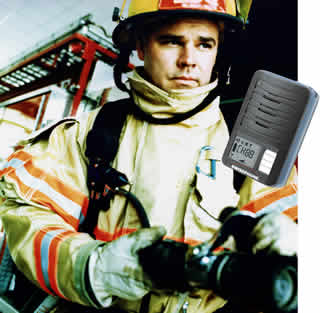
 Stopwatch
Stopwatch 

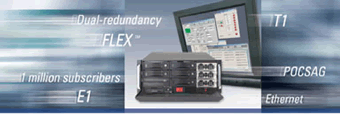
 A new POSpage communications system from Call-System's Technology promises to make the shop floor a more peaceful place to work and browse, as it eliminates the need for noisy tannoy announcements to alert store staff.
A new POSpage communications system from Call-System's Technology promises to make the shop floor a more peaceful place to work and browse, as it eliminates the need for noisy tannoy announcements to alert store staff.

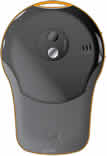
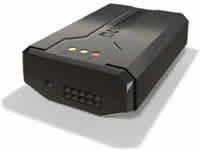
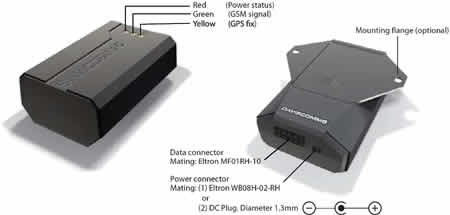

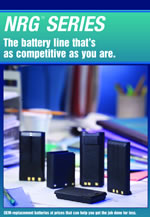




 ATM300
ATM300 












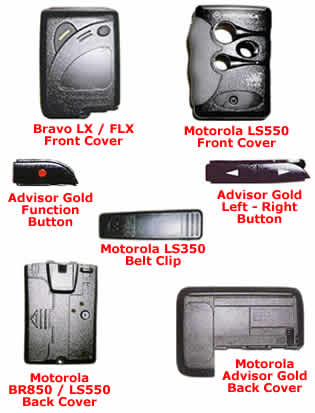

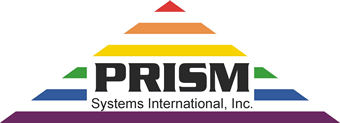


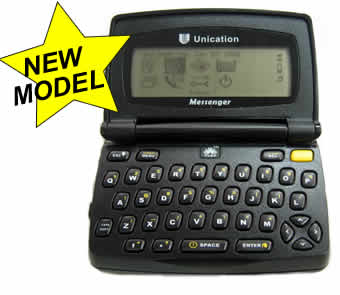







 In lieu of holiday cards this season, BloostonLaw will be making a donation to Healthcare for the Homeless, a local charity program. We wish our clients a happy and safe holiday season! In observance of the holidays, BloostonLaw Telecom Update will not be published until Jan. 9, 2008. Our office will be closed from Dec. 21 through Dec. 25, and Dec 31 & Jan. 1.
In lieu of holiday cards this season, BloostonLaw will be making a donation to Healthcare for the Homeless, a local charity program. We wish our clients a happy and safe holiday season! In observance of the holidays, BloostonLaw Telecom Update will not be published until Jan. 9, 2008. Our office will be closed from Dec. 21 through Dec. 25, and Dec 31 & Jan. 1.
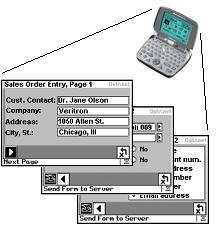 If you see someone in the field (like salespeople, technicians, and delivery people) using paper forms, their company could probably save a pile of money, and get much better timeliness, accuracy and efficiency, by using converting to Outr.Net's Wireless Forms. Custom applications for as little as $995, delivered in just a few days.Outr.Net has a web page on Wireless Forms for Timeports at:
If you see someone in the field (like salespeople, technicians, and delivery people) using paper forms, their company could probably save a pile of money, and get much better timeliness, accuracy and efficiency, by using converting to Outr.Net's Wireless Forms. Custom applications for as little as $995, delivered in just a few days.Outr.Net has a web page on Wireless Forms for Timeports at: 
